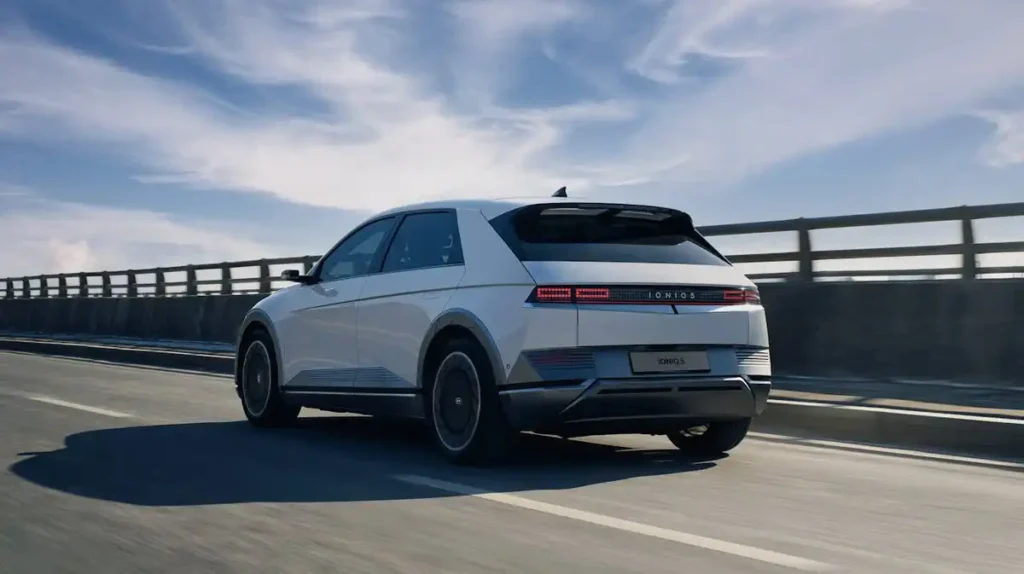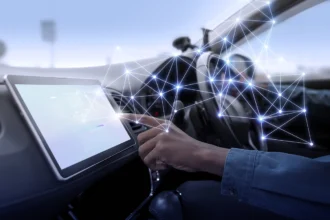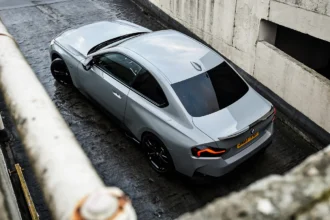Have you ever imagined a world where you could simply park your electric car and it starts charging without the need for cables or plugs? That world is rapidly approaching, thanks to the advancements in wireless charging technology for electric vehicles (EVs). But how exactly does wireless charging for electric cars work? Is it as convenient as it sounds, and how soon can we expect it to be widely available in the USA?
In this comprehensive article, we’ll explore the ins and outs of wireless charging for electric cars, how this groundbreaking electric vehicle tech is shaping the future of mobility, and what the technology means for drivers in the USA.
Evolution of Charging Technology for Electric Vehicles
Before we dive into the details of how wireless charging works, let’s take a step back and understand how electric vehicle charging has evolved over the years.

Traditional electric vehicle charging relies on physical connectors or charging cables that plug into either a home charging station or public chargers. This process, while effective, has its drawbacks. Finding a charging station, connecting cables, and waiting for your car to charge can be inconvenient. For those with home chargers, you also need to manage the installation and maintenance of these systems.
Now, imagine a future where your electric vehicle automatically charges as soon as you park it in your garage, or while it sits at a public charging station without needing any cables at all. That’s the promise of wireless charging.
How Wireless Charging Works for Electric Cars
Wireless charging for electric vehicles uses a process called inductive charging. This technology is similar to the way wireless phone chargers work, but on a much larger scale.
- Inductive Charging Basics
At its core, inductive charging relies on electromagnetic fields to transfer energy between two coils—one located in the ground (usually as part of a charging pad) and the other built into the vehicle itself. Here’s how it works:- A charging pad or coil is embedded in the ground or charging station surface.
- When the vehicle is parked over the pad, the coil in the car aligns with the pad.
- An electromagnetic field is generated by the charging pad, which induces a current in the vehicle’s coil, transferring energy to charge the battery.
- This process is entirely wireless, eliminating the need for cables or physical connectors.
- Key Components of Wireless Charging Systems
There are a few key elements involved in making wireless charging possible:- Ground Unit: This is the charging pad that creates the electromagnetic field and transfers energy. It can be installed in parking spaces, driveways, or public charging stations.
- Vehicle Unit: This component is installed in the electric vehicle and receives the energy from the ground unit.
- Control System: This system ensures that energy is transferred efficiently and safely between the ground unit and the vehicle.
- Efficiency of Wireless Charging
One of the most common questions surrounding wireless charging for electric cars is about efficiency. How does it compare to traditional plug-in charging?
Current wireless charging systems have an efficiency rate of around 90-93%, which is slightly lower than wired charging systems that can reach around 95% efficiency.
Benefits of Wireless Charging for Electric Vehicles
So why should you care about wireless charging? What makes it superior to traditional methods? Here are the key benefits that wireless charging brings to the table:
1. Convenience
The most obvious advantage is the sheer convenience of wireless charging. No more fumbling with charging cables, no need to worry about connectors or adapters. Just park your car and let the technology handle the rest. This hands-free approach is especially appealing to drivers with limited mobility or in situations where extreme weather might make using cables less practical.
2. Enhanced Safety
Wireless charging eliminates the need for exposed connectors, reducing the risk of electrical hazards such as short circuits or shock. In outdoor environments, wireless systems are more resistant to weather conditions since there are no physical connections vulnerable to rain or snow.
3. Reduced Wear and Tear
With wireless charging, you avoid wear and tear on both your vehicle’s charging port and the cables themselves. This can lead to long-term cost savings as you won’t need to frequently replace damaged charging equipment.
4. Potential for Dynamic Charging
One of the most exciting future prospects for wireless charging is the possibility of dynamic charging—charging your vehicle while it’s in motion. Imagine driving on a highway that has wireless charging pads embedded in the road. Your electric vehicle could receive a charge as you drive, reducing the need for frequent stops at charging stations. This technology is still in its early stages, but many experts believe it could be a game-changer for long-distance EV travel.
The Current State of Wireless Charging for EVs in the USA
While the idea of wireless charging for electric cars is promising, the technology is still in its early stages of adoption. However, there has been significant progress in the USA:
- Automakers like BMW and Mercedes-Benz have already started offering wireless charging systems for select electric models. BMW, for example, offers an inductive charging option for its 530e plug-in hybrid.
- Charging infrastructure companies are also exploring ways to implement wireless charging in public spaces. Some pilot programs are testing wireless charging pads in parking garages and on city streets.
In the USA, several cities are looking at ways to incorporate wireless charging technology into public infrastructure, making it easier for EV owners to charge their vehicles as they go about their day-to-day activities.
Future Trends in Wireless Charging for Electric Vehicles
Wireless charging technology is expected to become a key part of the electric vehicle tech USA landscape. Here are some of the key trends to watch:
1. Increased Range and Charging Speed
As wireless charging systems become more advanced, we can expect to see improvements in both the range and speed of charging. Current systems require vehicles to be very precisely aligned with the charging pad, but future systems may offer more flexibility. Additionally, faster wireless charging speeds will help reduce the time spent waiting for a charge.
2. Standardization
One of the biggest challenges in the current market is the lack of standardization between different wireless charging systems. To achieve widespread adoption, there needs to be a unified standard that all automakers and charging infrastructure providers can adhere to. The Society of Automotive Engineers (SAE) has already introduced the J2954 standard for wireless power transfer, which could help accelerate the adoption of this technology.
3. Wireless Charging at Public Stations
Just like how gas stations are found on every corner, wireless charging stations could become commonplace in urban areas. Imagine parking at a shopping mall or grocery store, and your car charges wirelessly while you shop. As the demand for EVs continues to grow, we’ll likely see more public spaces equipped with wireless charging stations.
4. Integration with Smart Homes
The future of wireless charging also involves seamless integration with smart home systems. Smart home technology could allow homeowners to manage and monitor their vehicle’s charging through an app, schedule charging times to take advantage of off-peak electricity rates, or even receive alerts when the car is fully charged.
FAQs About Wireless Charging for Electric Cars
1. How long does it take to charge an electric vehicle wirelessly?
A: The charging time for wireless systems is comparable to traditional plug-in systems, but it depends on the power output of the charging pad and the vehicle’s battery capacity. Most wireless systems are designed for overnight charging at home or during extended parking periods.
2. Is wireless charging for electric vehicles safe?
A: Yes, wireless charging systems for electric vehicles are designed with safety in mind. They operate with high efficiency, and since there are no exposed wires or connectors, they reduce the risk of electrical hazards. Additionally, advanced systems include foreign object detection to prevent charging if something like a metal object is between the vehicle and the charging pad.
3. Can all electric vehicles use wireless charging?
A: Currently, not all EVs are equipped with the technology to use wireless charging. However, automakers are increasingly offering this option, and it’s expected that more models will support wireless charging in the future.
4. What is the cost of installing a wireless charging system at home?
A: Installing a wireless charging system can be more expensive than a traditional plug-in charging station. Costs can range from $3,000 to $4,500 depending on the equipment and installation requirements. However, as the technology becomes more widespread, these costs are expected to decrease.
5. How efficient is wireless charging compared to wired charging?
A: Wireless charging is slightly less efficient than wired charging, with current systems operating at around 90-93% efficiency. Wired chargers can achieve up to 95% efficiency. However, as the technology evolves, the efficiency gap is expected to narrow.
Conclusion
Wireless charging for electric cars is no longer just a futuristic concept—it’s becoming a reality that could reshape the way we think about EV ownership and infrastructure. With the potential for greater convenience, enhanced safety, and exciting future developments like dynamic charging, wireless technology will play a major role in the continued growth of the electric vehicle market in the USA.
As automakers and infrastructure providers invest in this technology, we can look forward to a world where charging an electric vehicle is as easy as parking it. Whether you’re a current EV owner or considering making the switch, the future of wireless charging is something you won’t want to miss out on.








